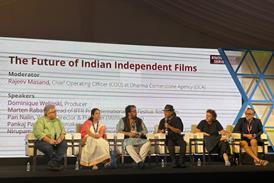Youtube is understood to have earmarked a fund of £10m to invest in UK-created content as it looks to roll out a range of entertainment, music and lifestyle channels.
The Google-owned videosharing site is keen to launch a portfolio of original channels, managed by content partners, with a final decision resting on the success of the strategy in the US.
The move could see YouTube launch as many as 20 UK channels, dedicated to content most appealing to advertisers, such as celebrities, cars, fashion or health.
YouTube will advance producers funds to make content that will be distributed via bespoke channels. It plans to keep a significant majority of the revenues generated from the ads sold around the shows until it recoups the advance, before shifting to a more balanced split. Producers will also retain the rights to exploit their content.
The push is being headed by YouTube’s senior director of content partnerships Patrick Walker, who is taking charge of music-related content, with former itv.com director Ben McOwen Wilson responsible for entertainment content. Head of sport Jeff Nathenson is also being lined up to secure content.
The plans to invest in UK original channels follow the investment of a reported $100m in 100 US channels, with content produced by indies including the US divisions of FremantleMedia and Shine Group.
Existing high-profile channel partners such as All3Media, ChannelFlip, SBTV and Vice Magazine are likely to be among those vying to secure advance funding from the UK rollout.
Industry executives welcomed YouTube’s anticipated entry into the market. “Five years ago, there were five channels and some doubted there would be 500 today. YouTube is betting that in another 10 years there will be 10,000 channels,” said one senior source.
“Any investment is of even more interest when you consider YouTube will soon be accessible in every living room through connected TVs.”
A Google spokesperson said it was too early to discuss specific future plans, adding: “We’re always talking to content creators and curators about building audiences on YouTube.”
This article was originally published in Broadcast
























No comments yet